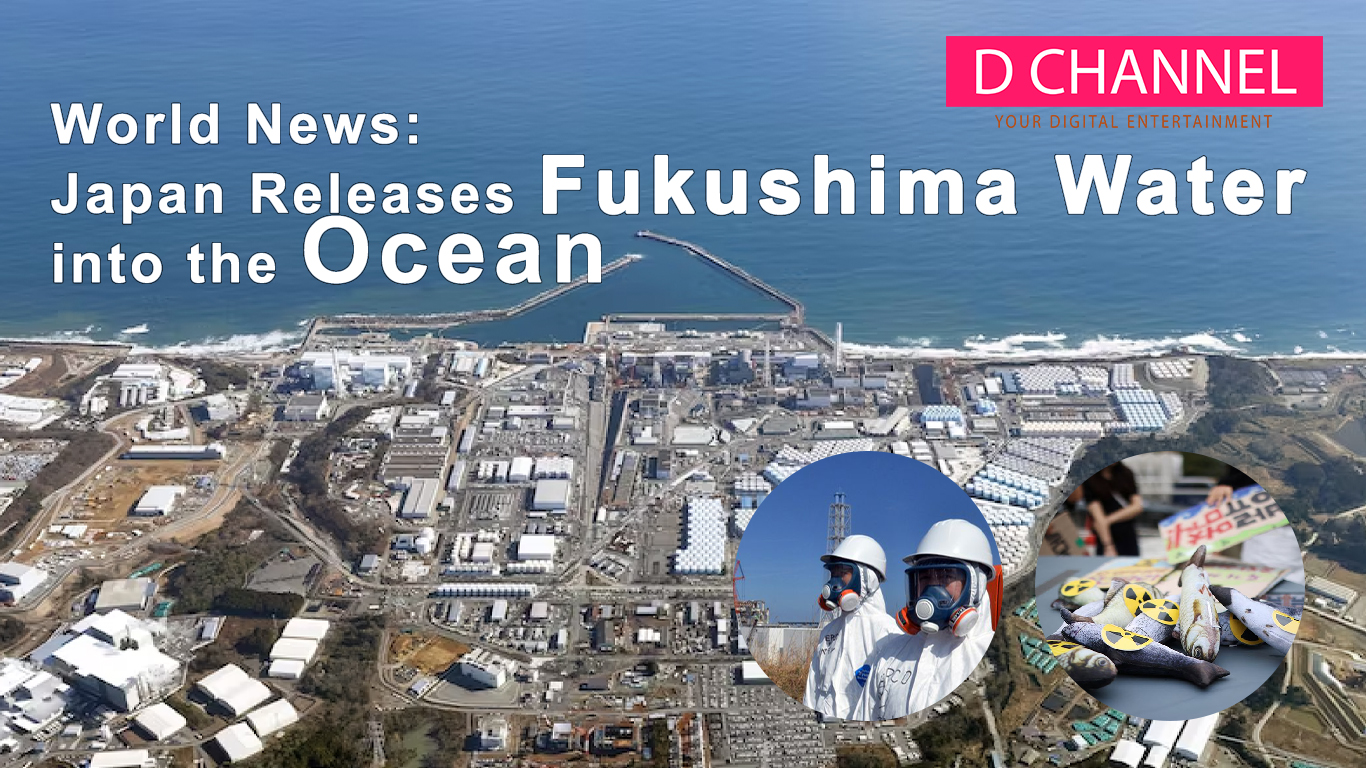World News: Japan Releases Fukushima Water into the Ocean

Japan — In a recent decision that has sparked international debate and concern, Japan has announced its plan to release treated radioactive water from the Fukushima Daiichi nuclear power plant into the ocean. This move comes more than a decade after the devastating earthquake and tsunami that led to the nuclear disaster in 2011.
The Japanese government has stated that the decision to release the water was made after careful consideration of scientific and technical analysis, taking into account various options for disposal. They assure the public that the water will be treated to remove most radioactive contaminants, ensuring that it meets international safety standards before being discharged.
However, this decision has faced criticism from environmentalists, neighbouring countries, and local communities. Concerns over potential environmental impact, health risks, and the impact on the fishing industry have been raised. Despite reassurances from Japanese authorities, there remains skepticism and apprehension surrounding the long-term consequences of this action.
Japan argues that they have reached their storage capacity limit for the water and face difficulties in finding alternative solutions. They maintain that the controlled release of the water will be done in a phased manner over several years, allowing for continued monitoring and assessment of any potential effects.
International organizations such as the International Atomic Energy Agency (IAEA) have been involved in assessing Japan’s plans and have acknowledged the efforts made in treating the water. However, discussions are expected to continue as concerns persist.
The release of the Fukushima water into the ocean raises broader questions about the management of nuclear waste and the responsibility of nations in dealing with such challenges. It highlights the need for transparent communication, international collaboration, and ongoing research to ensure the protection of the environment and the health and safety of individuals.
As this decision draws global attention, it remains to be seen how this development will unfold and whether alternative solutions will be explored in the future. The impact of this decision will undoubtedly shape discussions surrounding nuclear energy and waste management for years to come.
Before deciding to release the treated radioactive water, the Japanese government considered multiple alternative options. Some of these options included storing the water in tanks indefinitely, evaporating it, injecting it deep into the ground, or even solidifying it and burying it underground.
The decision to release the water was ultimately made due to several factors. One reason was the limited storage space available for the water. Despite efforts to increase storage capacity, it was becoming increasingly challenging to manage and store the growing volume of contaminated water.
Additionally, the government sought expert advice from various scientific and environmental organizations. These organizations conducted thorough studies and assessments to determine the potential impact of different disposal methods on human health and the environment. Based on these assessments, it was concluded that releasing the treated water into the ocean would pose the least risk when compared to other alternatives.
Furthermore, the government considered the technical feasibility of each option and the associated costs. The process of treating and diluting the radioactive water to meet safety standards had already been established. Releasing the water into the ocean was deemed a relatively safe and cost-effective solution compared to other options.
It is important to note that the decision to release the treated radioactive water was a complex one, taking into account multiple factors such as storage limitations, environmental impact, scientific assessments, and economic considerations.
The Japanese government conducted a thorough assessment of the risks and benefits associated with each alternative option before deciding to release the treated radioactive water. This assessment involved evaluating factors such as the potential environmental impact of different disposal methods, the effectiveness of treatment technologies, the capacity for long-term storage, and the potential economic implications. Additionally, scientific experts and international organizations were consulted to ensure that the decision was based on the best available knowledge and expertise. Through this comprehensive evaluation process, the government aimed to minimize potential risks and maximize the overall benefits to society.



